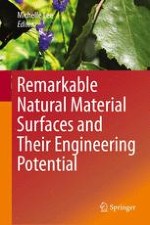2014 | OriginalPaper | Buchkapitel
13. Spider Silk: A Sticky Situation
verfasst von : Michelle Lee
Erschienen in: Remarkable Natural Material Surfaces and Their Engineering Potential
Aktivieren Sie unsere intelligente Suche, um passende Fachinhalte oder Patente zu finden.
Wählen Sie Textabschnitte aus um mit Künstlicher Intelligenz passenden Patente zu finden. powered by
Markieren Sie Textabschnitte, um KI-gestützt weitere passende Inhalte zu finden. powered by
